Abstract
This project implements a NeRF-based framework that represents a 3D scene in a compact way and render novel views given a number of 2D views of the same static scene. It integrates positional encoding, stratified sampling, and volumetric rendering.
Introduction
Neural Radiance Fields (NeRF) are powerful tools for 3D scene reconstruction. This project focuses on employing NeRF to represent scenes as mappings of 3D positions and viewing directions to RGB color and density. By leveraging positional encoding and efficient rendering techniques, this implementation enhances the quality and realism of synthesized scenes.
Core Components
Below are the key components of the NeRF framework.

Positional Encoding
The positional_encoding function applies sinusoidal transformations to map continuous coordinates into higher-dimensional space, enhancing the ability to model high-frequency variations in scenes.
Ray Sampling
Rays are sampled using get_rays and stratified into points along the ray using stratified_sampling. This ensures uniform coverage of the 3D scene, crucial for accurate density and color estimations.
NeRF Model Architecture
The nerf_model class defines a neural network architecture with:
- 10 fully connected layers with ReLU activations.
- A skip connection at the fifth layer to propagate input features.
- Separate branches for density prediction and feature-vector computation for color.
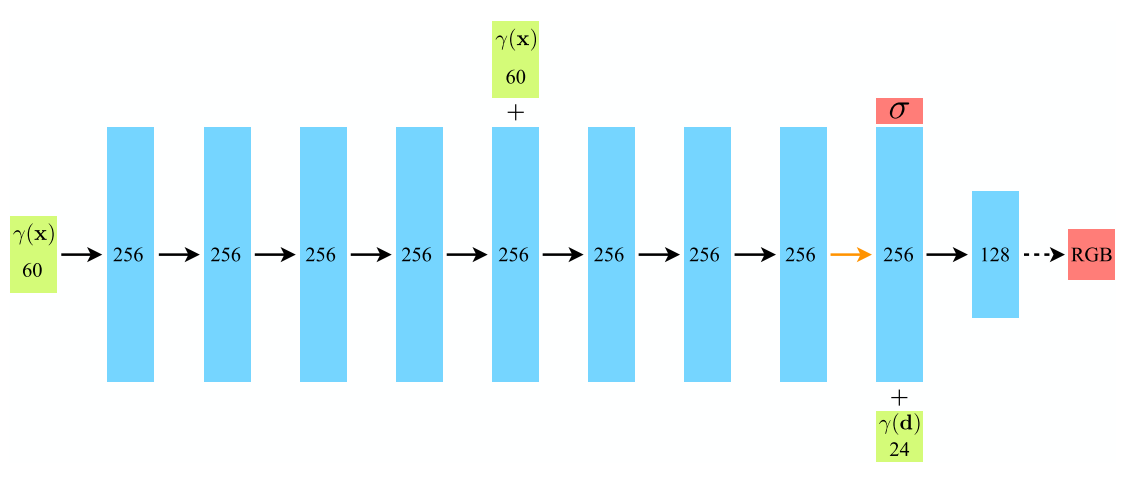
Volumetric Rendering
Colors of rays (pixels) are computed using the volumetric rendering equation. The method aggregates densities and RGB values along each ray to synthesize a 2D projection of the 3D scene.
From the above formulas, we have the following discrete approximations:
Results
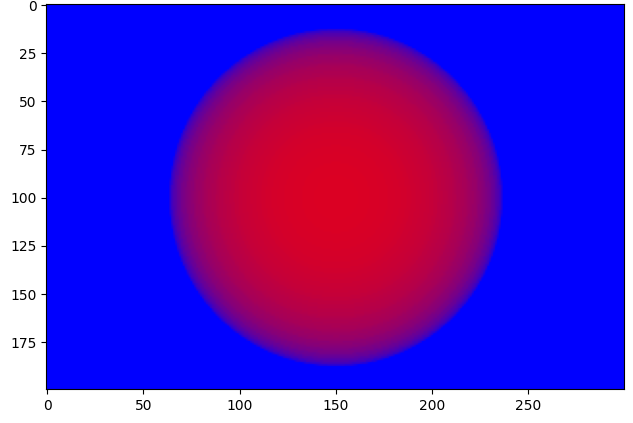
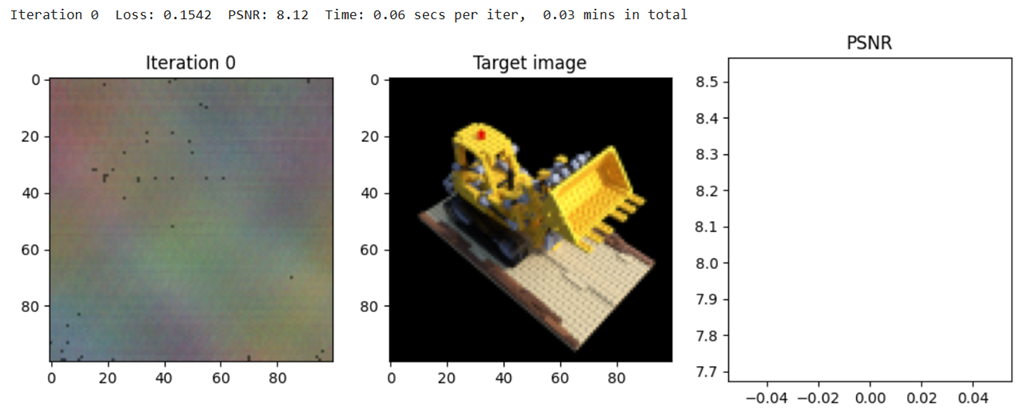
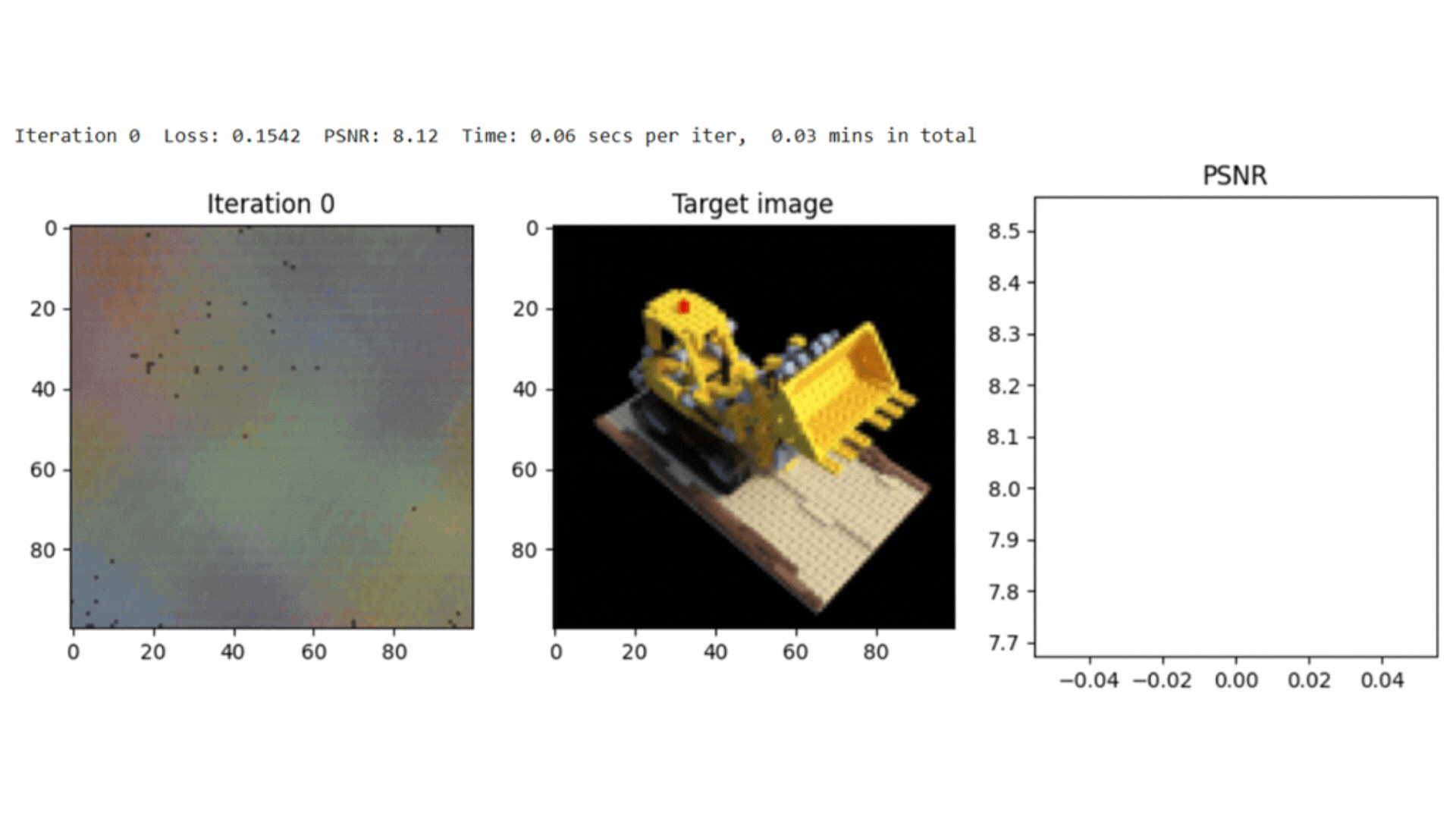
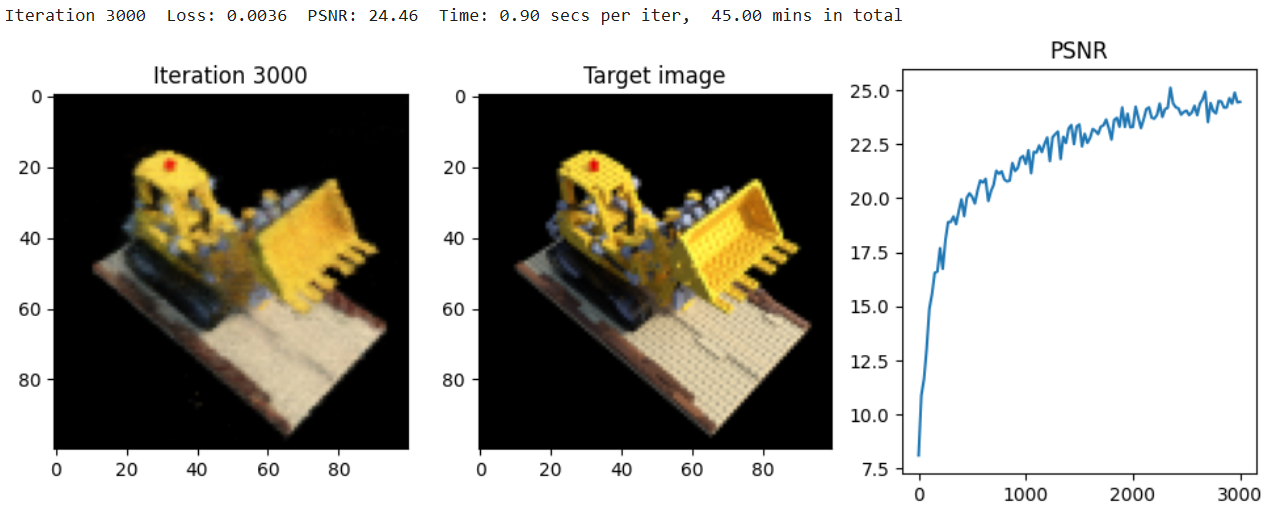
The implementation achieved a PSNR of around 25.0 after 3000 iterations, demonstrating the effectiveness of NeRF in scene reconstruction.
Here, represents the maximum pixel intensity, and is the mean squared error between the reconstructed and ground truth images.
Conclusion
This project successfully showcases the NeRF framework's potential for 3D scene reconstruction. The combination of positional encoding, ray sampling, and volumetric rendering allows for high-quality scene synthesis.
References
[1] Mildenhall et al. (2020). NeRF: Representing Scenes as Neural Radiance Fields for View Synthesis. In arXiv preprint arXiv:2003.08934.
[2] Towards Data Science. (2020). NeRF: Representing Scenes as Neural Radiance Fields for View Synthesis.
